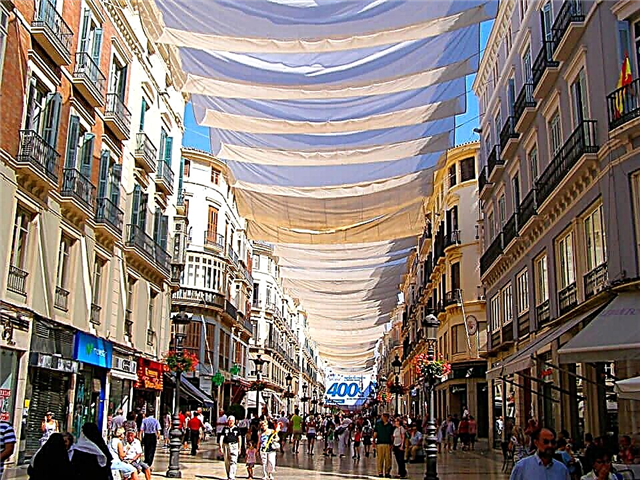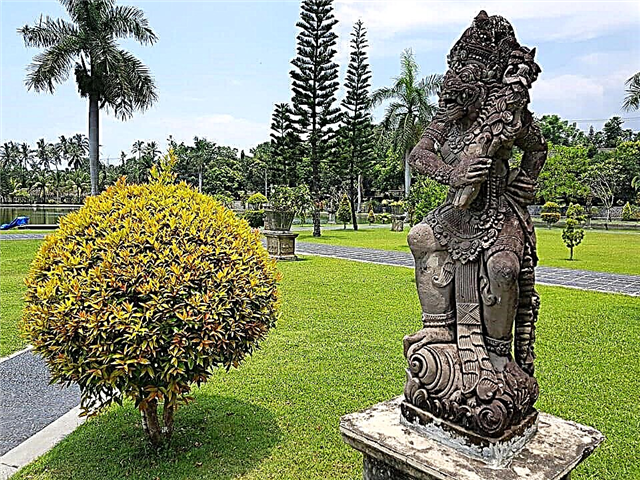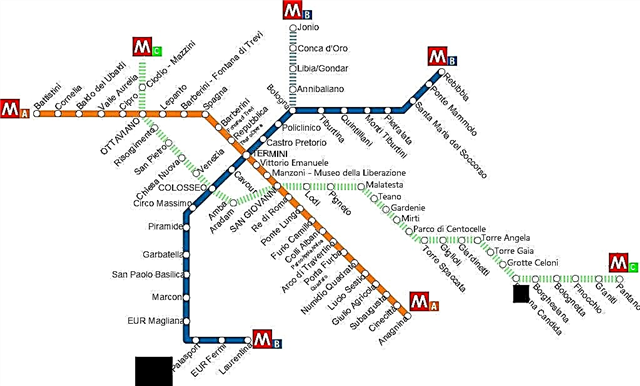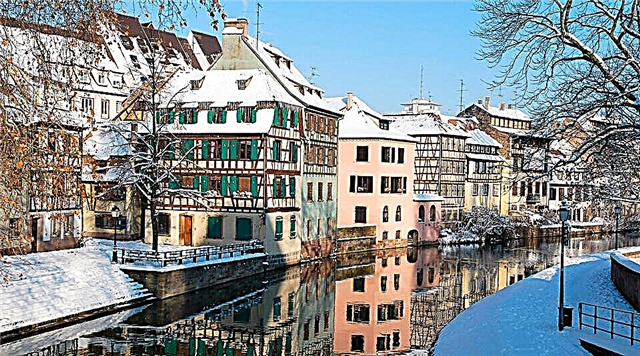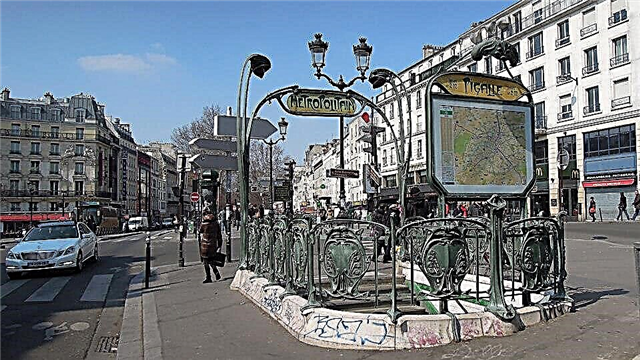Montmartre is a place of pilgrimage for tourists who come here from all over the world. People of extraordinary beauty are attracted by temples, legendary cabarets, cafeterias where famous people loved to visit, museums and galleries.
History

In ancient times, this place was a settlement of the Romans, they built two pagan temples - one dedicated to the god of war Mars, the other to the patron saint of trade Mercury. When gypsum was found on the hill, the area became rich - they began to build magnificent palaces and churches. Presumably in the 3rd century on Montmartre, the head of the first Parisian bishop, St. Dionysius and his associates.
In the 12th century, Benedictine monks founded a monastery with the Church of Saint-Pierre-de-Montmartre, consecrated in 1147. In the 19th century, the troops of Lanzheron captured the heights, but in March 1814 they surrendered - the Russian Army entered Paris with allied troops. In a peaceful life, the inhabitants were engaged in the extraction of gypsum (one street was named White Square), mills were built, and vineyards were planted. Life in the capital was more expensive, so many, even representatives of the middle strata of the population, moved to this picturesque suburb.
According to the general plan for the reconstruction of Paris, the district was annexed to the capital in 1860 as part of the 18th metropolitan area, at that time there were 57,000 inhabitants. Since the end of the 19th century, the quarter has become a bohemian habitat - great artists, writers, composers, including Van Gogh, Toulouse-Lautrec, Picasso and Modigliani, Emile Zola, Hector Berlioz, worked here. Almost all of them were in need of money, so they settled in barracks, from the convenience there was only cold water with one tap for all floors.
Origin of name

Several versions have been put forward about the origin of the name of the district:
- In 272, according to legend, the head of St. Dionysius, a Catholic priest. The hill was named after him, translated as “Mons Martyrium” - means “Hill of the Martyr”.
- The name comes from "Mons Martis" - "Mars Hill", as in the ancient period there was an ancient Roman temple.
The exact meaning of the translation is not known.
Sights

How can a person who has come to the capital for a few days see the most interesting and significant in all the variety of attractions?
- Admirers of the talent of the eccentric Spaniard Salvador Dali should visit the museum dedicated to his work. Located near the Place du Tertre. A small building with an inconspicuous sign. If you don't know that the room contains the most significant collection of the great master's works, you can pass by. A permanent exhibition is open and temporary exhibitions are organized.
- Dalida, a legendary French singer of Italian descent, lived in Montmartre. Grateful Parisians named the square in her honor where the bust of the singer was erected. You can get to it along the rue Girardon.
- Anyone who is familiar with the work of the writer and screenwriter Eme knows the most popular of his stories - “The Man Walking Through the Wall”. An interesting and original monument to the hero of the story can be seen walking along the Rue Girardon to the Place de Marseille Aimé.
- Recently, the Wall of Love appeared and became unusually popular among couples in love. It was installed at the initiative of the artists Baron and Quito. Couples in love can write the cherished words “I love you” on the wall, as thousands of people have already done in more than 200 languages.
These are just a few of the attractions that tourists might be interested in, the journey is just beginning.
Basilica of the Sacre Coeur

The main place sacredly revered by the French is the Basilica of the Sacre-Quez (Sacred Heart), Erected on the highest point of the mountain and can be seen from everywhere. The temple in the Roman Catholic style was designed by the architect P. Abadi. It was erected in 1875-1914 in memory of the victims of the Franco-Prussian war. Built with charitable funds raised by residents. White limestone was used for the construction, the height of the building is 83 m. The dimensions of the largest basilica bell in the capital, cast in 1891, are striking. The bell weighs 19 tons, the tongue weighs 850 kg.
The facade is decorated with bas-reliefs and biblical figures - the Archangel Michael, an angel; above the portico, there are statues of the national heroine Jeanne D ”Arc and St. Louis. In the central part - the figure of Christ the Savior. The forces of evil are represented by a serpent, gargoyles, chimeras. The interiors are decorated with stained glass windows and mosaics on biblical themes created in the first decades of the last century.
The largest organ is installed in a special niche. The wooden building is richly decorated with sculptures of angels and turrets in the Gothic style. Initially, it was distinguished by a unique sound, however, restorations and dust accumulating inside the instrument slightly worsened the sound. Under the altar there is a crypt - where the remains of priests and famous people of Paris rest.
Place du Tertre

The main square of Montmartre is Tertre. There are always a lot of people here - numerous tourists, street painters and artists, local residents. Probably, the name comes from the word tertr - a site for executions, which were carried out at this place in the Middle Ages.
At the beginning of the century, Pissarro, Van Gogh, Picasso and other representatives of Cubism, Surrealism, Impressionism began to work here. Nowadays, young talents work here, who will draw a cartoon or a city landscape in a few minutes. Almost all buildings are of historical value. On the ground floors of the buildings, there are antique shops, art galleries and cafes, which are proud of their famous visitors. This is evidenced by photographs hung on the walls.
Montmartre Museum

After strolling around the Place de la Tertre, drinking coffee and receiving their portrait, guests of the capital go for real masterpieces collected in the Museum of Montmartre. It is located in the 17th century Rosimon mansion. At first, the actor of the theater troupe Moliere, the artist Dufy and the musician Satie lived there. In the last quarter of the 19th century, Renoir's workshop was opened in the building, which became the property of the gymnast and artist Valandon and her son. The family lived in the house for several decades.
The collection of the museum contains posters, canvases by famous masters of the brush, photographs. The exhibition is dedicated to the following topics:
- the history of Montmartre, from the time when the hill was a simple settlement, the inhabitants of which worked in gypsum quarries
- The Paris Commune and the massacre of its participants
- “Festive Montmartre” - shows the entertainment industry: cabaret and ballrooms, posters of stars, costumes of dancers
- "La Bohème of Montmartre"
The museum hosts temporary exhibitions and promotions, an extensive library, and a collection of chanson recordings.
Cabaret "Nimble Rabbit"

The two-story cabaret building is nestled on the side of a hill and is not easy to find if you do not know the exact address. The house looks like a fabulous, lilac color and a sign depicting a huge rabbit with a bottle of wine in his hands. At the entrance to the premises there is a wardrobe and a small hall. The performance takes place on the second floor in a semi-dark room. The actors are sitting among the audience. The hall is decorated with paintings telling about the bohemian life of the quarter. The program has hardly changed over the century - to the accompaniment of accordion guitar and piano, French songs from the repertoire of Edith Piaf, Charles Aznaur, Joe Dossen and other singers are performed. Actors read poetry, present short plays. The atmosphere is relaxed and warm.
Vineyards

The vineyards of the quarter are located on rue de Sol and Saint-Vincennes, and occupy an area of just over 1.5 square meters. A total of 1762 vines of 27 varieties, of which up to 500 liters of wine are produced annually.Since the thirties of the last century, the New Wine Festival has been celebrated in October. According to legend, the first vine was planted by the Romans in 120. In the Middle Ages, almost all the inhabitants of the hills were engaged in viticulture, vineyards occupied a significant part of the territory.
Many taverns and taverns appeared here, people even came here from the capital, because wine in the suburbs was much cheaper. When the territory became part of Paris, the vineyards became smaller, they were cut down and houses were built. In 1929, at the initiative of the artist Pulbo and his associates, the remains of the historical site were saved. In 1933, residents rebuilt the vineyard on the north side of the slope.
Moulin de la Galette mill

"Galetnaya Mill" is a mill built back in 1622. Initially, it was used for its intended purpose, but once its owners, by the name of Debre, built a shed and set tables - the first restaurant with a dance hall appeared. In good weather, people had fun in the open air, in rainy weather, they gathered in a room that looked like an ordinary barn. At first, workers, seamstresses - ordinary people came here to dance and have fun after a working day. By the end of the 19th century, artists, actors and musicians who are now known all over the world gathered at the mill. Located at the crossroads of Lepik and Tolose streets. It is under state protection.
Cafe "Two Mills"

The cafe gained fame after the release in 2001 of the sensational picture "Amelie", some of her actions take place in the institution. After the film, new design elements appeared - a poster with the autograph of the actress Totu, who played the main role, a small museum of the film, placed for some reason in the men's room.
Opened at the beginning of the 20th century, the interior of the cafe has not changed since the 50s of the last century. Even the menu remains the same, the new owner just removed the tobacco stall and replaced the tablecloths with paper napkins. This is a cozy bistro with a cozy home atmosphere where you can order coffee, a glass of wine or the main dessert - creme brulee with cardamom.
Cabaret "Moulin Rouge"

Moulin Rouge (Red Mill) is the most famous cabaret. Founded in 1889 by Oller and Zdler, it became in demand within a few months of its opening. Tickets must be booked in advance, especially on holidays. Here they performed a cancan to the music of Offenbach for the first time, Toulouse-Lautrec created, posters written by the artist's hand still hang at the entrance and in the premises itself.
The duration of the performance is 1 hour 45 minutes.
Topics in the program:
- Moulin Rouge yesterday and today
- The history of the pirate Sandohan
- Circus show
- Cabaret history - dedicated to the women who made cabaret famous. The incendiary cancan ends.
- Chicago show
The performances involve 80 artists, more than 140 musicians and singers. 1000 colorful costumes from famous designers were sewn, decorated with rhinestones and feathers. An enchanting sight!
Cemetery

Opened on January 1, 825 at the site of a quarry where gypsum was mined. Occupies an area of 11 hectares, located in the western part of the district. Now there are 20,000 burials here, and since the cemetery is active, 500 graves appear annually. At the entrance, people are given a map of the territory.
Actors, artists, musicians, politicians are buried in the cemetery - Offenbach, the inventor of the saxophone Sachs, artists Degas, Moreau, writers Heine, Stendhal, Dumas-son. Buried Alfonsine Duplessis, sung by the writer Dumas in the work "Lady with the Camellias". Delilah, on whose grave you can always see fresh flowers.
Boulevard Clichy and Place Pigalle

On the Boulevard de Clichy there are hundreds of sex shops, nightclubs with spicy performances, strip clubs. The boulevard is considered the center of nightlife in the French capital. Although it is interesting to walk here during the day. The boulevard is historically famous for the fact that the battle of the Russian and French armies took place here during the 1814 campaign. This place was often depicted in his canvases by Van Gogh, he loved to visit the cafe "Tambourine" located here.
The Erotic Museum, opened in 1997, is located on the boulevard. On the ground floor there is an exposition telling about brothels of the 19th and 20th centuries, presenting furniture, erotic devices allowed for use in legalized brothels. On the second floor, paintings are, of course, erotic themes by contemporary artists, cartoons and sculptures on sexual themes.

Walking along the boulevard, you find yourself on the Pigalle square, also favored by creative bohemians. The famous Black Cat cafe is located here. It is interesting that many celebrities who visited him were poor and, for lack of money, paid with their drawings - among them Picasso, Renoir, Degas. Nowadays, the red light district is located here - there are sex shops at every step, even on the street they sell piquant items. It is better not to walk with children. In the evening, at every step you can meet representatives of the ancient profession.
Where is it located and how to get there
Montmartre is located in the 18th municipality in the north of Paris, France.
How to get there: take the metro to stops: Anvers, Pigalle, Blanche (line 2); Lamarck, Colencourt and Abbes (12th line). Then climb the stairs or take the funicular.
It is difficult to describe and enumerate so many attractions that are collected in the Parisian quarter of Montmart. If you are lucky enough to be in the French capital, be sure to visit the bohemian quarter.




